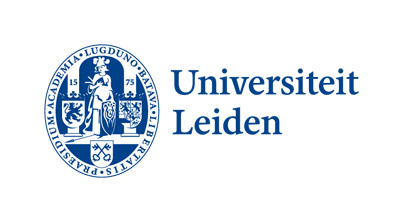Text Mining 2022-2023
Course schedule
The course weeks consist of: a lecture, literature to read, and either a practical exercise (tutorial style) or a hand-in assignment.
The lectures are on Wednesday, 9.00-10.45.
Location:
- September: CORPUS / 2.02 (Corpus Nederland)
- October-December: GORL / 01 (Gorlaeus building)
The literature will be distributed on Brightspace. The majority of the chapters comes from this book, abbreviated as J&M in the course schedule below.
- J&M: Dan Jurafsky and James H. Martin, Speech and Language Processing (3rd ed), 2021
| Week | Lecture | Literature | Exercise / assignment |
|---|---|---|---|
| 1 (7 Sept) | Introduction (slides) | ||
| 2 (14 Sept) | Text processing (slides) | J&M chapter 2. Regular Expressions, Text Normalization, Edit Distance | Exercise: Chapter 1 of "Advanced NLP with Spacy" |
| 3 (21 Sept) | Vector Semantics (slides) | J&M sections 7.1, 7.2, 7.3. Neural Networks J&M chapter 6. Vector Semantics | Exercise: Word Embedding Tutorial: Word2vec with Gensim |
| 4 (28 Sept) | Text categorization (slides) | J&M chapter 4.1-4.3. Naive Bayes Classification | Exercise: Text classification tutorial (sklearn) |
| 5 (5 Oct) | Data collection and annotation (slides) | Finin (2010). Annotating Named Entities in Twitter Data with Crowdsourcing McHugh (2012). Interrater reliability: the kappa statistic | Assignment 1. Text classification (deadline 17 Oct) |
| 6 (12 Oct) | Information Extraction (slides) | J&M chapter 8. Sequence Labeling for Parts of Speech and Named Entities J&M chapter 17. Information Extraction | Exercise: Sequence labelling tutorial (crfsuite) |
| 7 (19 Oct) | Neural NLP and transfer learning (slides) | J&M chapter 9. Deep Learning Architectures for Sequence Processing | Exercise: Fine-Tuning BERT (HuggingFace) |
| (26 Oct) | No lecture | ||
| 8 (2 Nov) | Topic Modelling & Text summarization (slides) | Zhang et al. (2020) PEGASUS: pre-training with extracted gap-sentences for abstractive summarization | Assignment 2. Information Extraction (deadline 14 Nov) |
| 9 (9 Nov) | Sentiment analysis & Stance detection (slides 1, slides 2) | Reuver et al. (2021) Is Stance Detection Topic-Independent and Cross-topic Generalizable? – A Reproduction Study | Exercise: BertViz tutorial |
| 10 (16 Nov) | Biomedical text mining (slides) | Lee et al. (2020) BioBERT: a pre-trained biomedical language representation model for biomedical text mining | |
| 11 (23 Nov) | Industrial Text Mining | Guest lecture by TextKernel | Paper reading for the final assignment |
| 12 (30 Nov) | Conclusions | Final assignment (deadline 8 Jan) | |
| 13 (7 Dec) | Online lab session | Final assignment (deadline 8 Jan) | |
| (3 Jan) | Exam | ||
| (3 Feb) | Re-sit |
The assessment of the course consists of a written exam (50% of course grade) and practical assignments (50% of course grade). The practical assignments comprise two smaller assignments (10% each) and one more substantial, final assignment (30%). The grade for the written exam should be 5.5 or higher in order to complete the course. The average grade for the practical assignments should be 5.5 or higher in order to complete the course. If one of the tasks is not submitted the grade for that task is 0. Each assignment has a re-sit opportunity (a later submission). The maximum grade for a re-sit assignment is 6.
Earlier editions of this course
Link to the course page for this course in 2021-2022
Link to the course page for this course in 2020-2021
Link to the course page for this course in 2019-2020
Link to the course page for this course in 2018-2019
